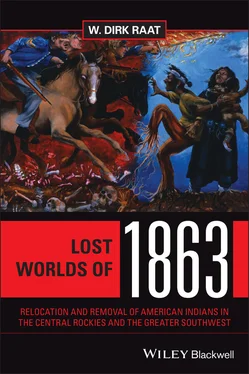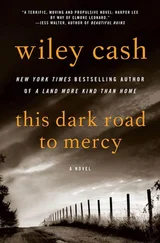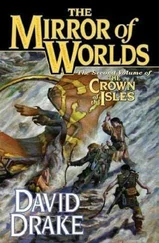One example can be used to illustrate the aforesaid. During the second quarter of the nineteenth century a small number of trappers known as the La Bonté group were hunting and trapping southwest on the outskirts of the Great Salt Lake. The expedition of five men led by a Colorado trapper named Rube Herring soon left the safety of the lake and headed across the desert. Although Rube supposedly knew the country and was an experienced guide, his ignorance was soon apparent as the group lost their way across the waterless desert of the Great Basin desert. Late one evening several Paiutes crawled into their camp and stole two of their horses. The next day La Bonté and his men followed their tracks to the Indian village. The following morning the trappers, discharging their rifles at close quarters, killed nine Indians and captured three young girls. They also retrieved their stolen horses and acquired two more. After proceeding to scalp the dead bodies, the trappers moved on with their young “squaws” in hand. But they were still lost, and food and water was in short demand. 35
Eventually, they were so driven to the point of hunger that one of them suggested that the alternative to starving to death would be to sacrifice one of their party so as to save the lives of the others. The idea was voted down, and La Bonté and the others, who had noticed some deer-tracks, decided to hunt for wild game. At sunset when La Bonté returned to camp he saw one of his companions named Forey broiling some meat on the embers. The young girls were gone, perhaps having escaped. In the distance he saw what he thought was the carcass of a deer. Forey shouted, “there’s the meat, hos—help yourself.” La Bonté drew his knife and approached the carcass, but, as his narrator George Frederick Ruxton notes, to his horror he saw “the yet quivering body of one of the Indian squaws, with a large portion of the flesh butchered from it, and part of which Forey was already greedily devouring.” 36
The La Bonté experience is an extreme example and may be a composite of fiction and reality, but it does illustrate the ideas of cannibalism and mutilation of Indian bodies. As for the eating of human flesh, even the great pathfinder and anti-slavery crusader John C. Frémont experienced cannibalism during his attempt to cross the San Juan Mountains in the winter of 1848–1849. 37
John C. Frémont, Pathfinder and Not so Free Soiler
On January 21, 1813, John Charles Fremon was born out of wedlock in Savannah, Georgia, the child of Ann Pryor, the daughter of a socially prominent Virginia planter, and Charles Fremon, a French-Canadian refugee from Quebec who taught foreign languages, fencing, and dancing, painted frescoes, and attracted the fancy of Mrs. Pryor. A household slave called Black Hannah aided in raising young John. His father died when John was a youngster of five years of age. A truant in the private schools, he went on to college to study mathematics and the natural sciences. At age 25 he changed his surname to Frémont, adding the accent and the “t.” This was to take his father’s name. His father originally had been called Louis-René Frémont and had changed his name in order to avoid pursuit by British authorities in Canada. Thus John C. Frémont had now reclaimed his father’s true name. Between 1838 and 1841 he served in the Corps of Topographical Engineers, assisting in mapping the country between the Mississippi and Missouri Rivers. 38
Frémont had acquired the nickname “the great pathfinder” because of his explorations in Western America during the 1840s. His career as federal surveyor and “pathfinder” was promoted by his father-in-law, Senator Thomas Hart Benton from Missouri, and his travels were popularized by his wife and Benton’s daughter, Jessie, who rewrote his journals into literary masterpieces that made him a national hero. Benton pushed appropriations through Congress that provided the financial backing for his survey expeditions of the Oregon Trail (1842), Oregon Territory (1844), the Great Basin, and the Sierra Nevada in California (1845). 39Most of these missions fulfilled Benton’s “Manifest Destiny” views of America’s expansionist future, and all of them were designed to develop the national economy, from transcontinental railroads to resource development (land and precious minerals). Pushing the American Indian and his or her land to one “side” was truly the “downside” of this nationalistic worldview.
Frémont certainly earned his “pathfinder” label, even if he was often guided by more experienced mountain men like Christopher “Kit” Carson, “Uncle Dick” Wootton of Bent’s Fort fame, or the eccentric “Old Bill” Williams, or a group of Delaware Indians, Sierra Natives, and Oregon Chinooks. To enlist the services of a “Kit” Carson meant Frémont improved his chances of surviving Indian attacks, thirst, hunger, and angry mules. In 1861, during the Civil War, he showed similar wisdom as Commander of the Department of the West when he recognized the military skills of Ulysses S. Grant and assisted the latter in separating the Confederacy from its terrain west of the Mississippi. His early expeditions led to the Anglo-American discovery of Lake Tahoe, proved that the Great Basin had no outlet to the sea, and described western lands and Indians along the Oregon Trail and the Sierra Mountains. His expeditionary maps were published by the US Congress and became the “Report and Map” that guided hundreds of overland immigrants to California and Oregon, and led the Mormons to the Salt Lake Valley. He was truly the “pathfinder” of the West. 40
His good name made it possible for Frémont to purchase in 1847 the Rancho Las Mariposas land grant in the Sierra Nevada foothills outside of Yosemite, where gold discoveries enriched the young and energetic 33-year-old adventurer. He acquired large landholdings in San Francisco, including a Golden Gate mansion, and had a luxurious lifestyle in Monterey. By 1850 he was a wealthy and successful man.
Of course, what generated popularity for Frémont among the Anglo-American settlers in California from 1846 to 1850 in no way aided his legacy. Many of his actions were intemperate and ill-conceived, and reflected a mean streak not always complimentary to his character. After meeting with President James K. Polk in Washington, DC in the early months of 1845, Frémont went to St. Louis and organized a group of military volunteers who traveled with him to Sutter’s Fort in California, arriving in December of that year. In May 1846 he and his volunteers, including Kit Carson, attacked and destroyed a Modoc fishing village at Lake Klamath in south-central Oregon. Although the action was supposedly in retaliation for an earlier Indian assault, the evidence suggests that the villagers were not involved in the first action. Later the bloodlust continued when Frémont and his followers without provocation wiped out a series of Maidu villages on the Sacramento River, slaughtering men, women, and children. 41
The killing did not stop here, for in June 1846 he ordered Kit Carson to murder three Hispanics. It turned out that these men were established and respected members of California’s Mexican elite, all being mayors or Alcaldes and governing authorities in Sonoma and Yerba Buena (later known as San Francisco). 42Frémont then assumed leadership of the Bear Flaggers and falsely took credit for the independence of California. The revolt lasted 26 days, ending once the US Army arrived with the Bear Flag being replaced with the Stars and Stripes. Unbeknown to Frémont and his Bear Flag supporters, the US had already declared war on Mexico on May 13, 1846. Most of Alta California did not even know about the revolt, even though the rebels declared the independence of California from Mexico. 43
Читать дальше












